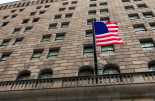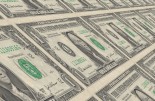M&G: When America sneezes, the world catches a cold

Below is a commentary by Eva Sun-Wai, Fund Manager in M&G's Fixed Income Team, on the Fed's rate decision.
The Fed decision to follow through with the 75bps hike proves that inflation targeting is very much on the cards at the expense of growth, even if market pricing seems undecided between whether growth or inflation will dominate in the mid-term. Markets (equity and bonds) had rallied into this proposed hike for the past few weeks with curves remaining flat, signalling the need to bring inflation under control in the short term.
Fed narrative is driven by inflation but they have acknowledged that the need for hikes could cause an economic slowdown and thus the slack to rebalance the economy in supply and demand terms. The immediate market reaction was muted as expected but a rally in both equity and bonds with some curve steepening followed the press conference.
The Fed need to follow through and actually be data dependent. They should be keeping options open as there are many sources of data to be watching, with some indicators more lagging than others. The US labour markets have countered all of the other signals of a weakening economy as flagged by Fed Chair Powell following the announcement.
Are the Fed now lagging the real economy by looking at labour markets more than the rest of the data? Powell did say that there was some slowing in labour demand, but the gap between supply and demand was still too large. Using current labour market data could be misleading, as monetary policy historically takes effect in the real economy with a 12-18 month lag, and unemployment levels have historically hit lows 12 months before the beginning of a recession.
Is this decision a surprise? No. Was it a good decision? Markets seem satisfied for now, especially as 100bps was floated after the Bank of Canada’s 100bp surprise (at one point the Fed hiking 100bps was 75% likely, which then reduced to 20% likely going into today’s meeting) and a higher than expected CPI print, but longer term this remains to be seen.
Choosing to be aggressive now, albeit later than needed, could give the Fed a good grip on knowing how much is residual inflation, and perhaps they can then bring this under control. Growth will likely fall and technical recession seems imminent, but the Fed may want to give themselves a cushion on future cuts, if they accelerate hikes through 2022. Chair Powell is still targeting 3.25-3.5% by year end, saying we are roughly neutral now.
It seems nearly impossible to manage both inflation and growth simultaneously when this far behind the curve, and therefore the soft landing in our eyes was always optimistic rather than realistically achievable. Switching to a ‘meeting by meeting’ guidance provides very clear indication that they see the economic outlook as highly uncertain and retaining optionality will be crucial to their credibility.
How will this impact markets and the economy in the US and further afield? Well, this feels like a case of ‘the US sneezes and the world catches a cold’. Nothing has changed here. The US economy has started to show weakness of late, the strength of the labour market somewhat shrouding the fragility of the consumer - and their ability to pay ever increasing prices - and also more importantly their confidence.
The inequality gap is likely to once again widen creating political pressure. As we know this is likely to have implications globally. In Powell’s opinion if price stability can be brought under control as is the 'bedrock of the economy', the Fed has a chance of maintaining the levels of pre-pandemic labour markets. This is his key to a soft landing.
One could argue that inflation could be self-eroding over time as demand and the consumers’ spending power weakens and prices eventually come down. However, we know that inflation is not a mean reverting phenomenon. Energy and geopolitics are the other big factors globally that central banks cannot control. The Fed have targeted inflation at a time when there are many unknowns. Further tightening of financial conditions will take time to curb the inflation, if it can, that is not part of base effects.
Meanwhile, the USD marches forward, as it has for much of 2022 - this is good news for the US, it’s less constructive for the rest of the world. Don’t fight the Fed holds firm.










